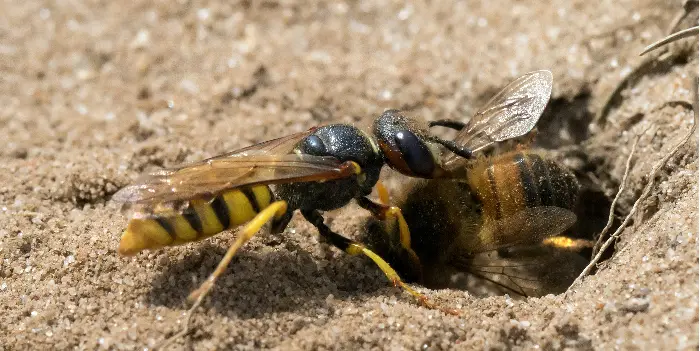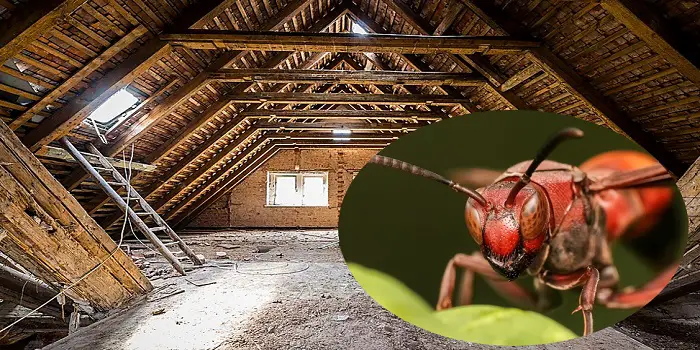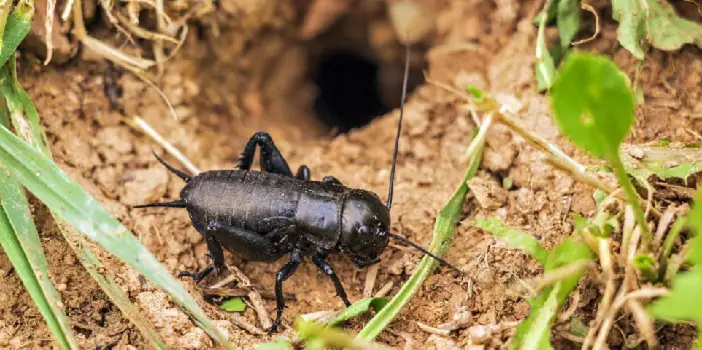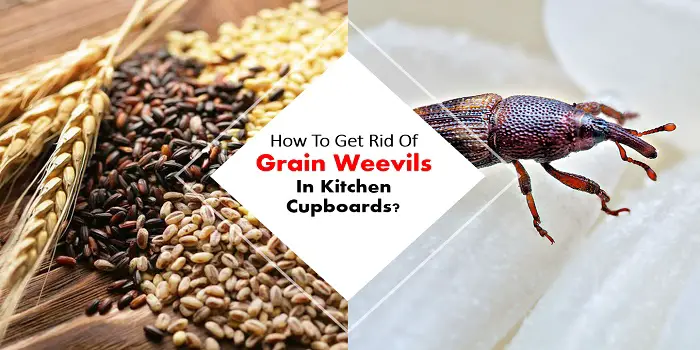
Look, I don’t have anything in particular against bugs.
I’m definitely not entomophobic, so if they’re willing to keep their distance, I’m willing to keep mine!
I don’t make it a habit to actively seek out any bugs in my vicinity in some sort of Terminator-esque mission.
Even if a bug, say, lands on my desk, I’m OK with letting it do its thing.
That said, my cupboards are a sacred place, and the food they hold is my most precious treasure.
And the idea of even a single bug laying its little feet on my food is nothing short of sacrilege.
Which are exactly why pantry weevils send chills down my spine.
And I expect that I’m not alone here!
Not sure if anybody is down for beetles chilling in their rice—at least, not anybody that I’d be willing to hang out with.
For all of us normal people, we’ve made this handy introductory guide on what pantry weevils are, how to identify them, and, finally, we’ll go through five ways to get rid of them so that you can eat your cereal in peace!
What is a Pantry Weevil?
A weevil is a tiny, pesky little beetle that can ruin your food and kitchen cupboards.
Weevils don’t just eat your food; they’ll actively lay their eggs in it! Weevils lay their eggs in foods like grains, flour, rice, nuts, and cereal.
Their larvae remain in and eat the food they were laid in until they’ve grown when they’ll go on to lay more eggs, continue the cycle, and keep tormenting your life.
They quickly reproduce, and they have an average lifespan of a few months, during which they will mate and lay eggs multiple times.
Typically, weevils are most active in summer and early fall, when grain harvesting hits its peak.
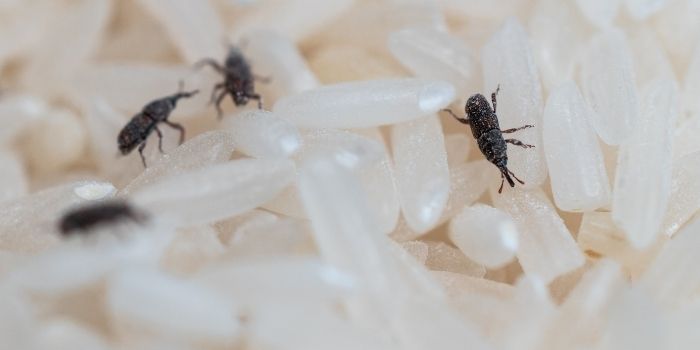
Weevils are extremely common pests; if you want a quick squick: you’ve probably eaten some without even knowing!
They’re not toxic to humans, but they are not ideal!
They’re very small—only a few millimeters when fully grown—and because of their coloring, you’re unlikely to notice them.
They infiltrate your house, usually from cracks or holes in your walls or, worse, in dry food bought from the store.
It’s very hard to actually identify them, but there are a few ways to tell if the little buggers are hosting a get-together in your cupboards, which we will cover in the next section.
How to Know if You Have Weevils in Cabinets?
There are thousands of different types of weevils that can live in a wide variety of food, but typically the weevils that bother us are either flour weevils or rice weevils.
Usually, you’ll spot them as little, slightly off-colored squirming larvae in otherwise white, decidedly not squirming food.
They’re colored like metal, so while they’re tough to spot, they’re not impossible.
That said, after reading this article, you might convince yourself that you see weevils everywhere.
So it’s usually a good idea to get a second opinion from a pest exterminator if you believe that you have weevils in your home.
The best thing you can do against weevils is to try and prevent them from entering your home in the first place.
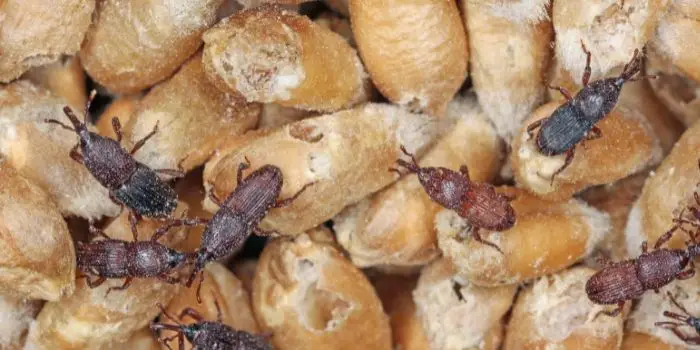
5 Ways to Get Rid of Grain Weevils in Kitchen Cupboards
You can never be too careful with checking your food to see if it’s infested with long black bugs!
That said, if you know for sure that weevils have already made their way into your home, fear not!
We’ve compiled five ways to get rid of grain weevils that have scuttled into your food.
1- Clean, clean, and clean your pantry
The first thing you should do with a kitchen cupboard is clean the infected pantry as much as possible.
If you don’t properly dispose of all infected items and clean out your pantry, it is very likely that the weevils will just return with a vengeance.
So, clean your shelves like your life depends on it!
Make sure to throw away any infected product, as well as any unsealed products that weevils may have gotten into.
Also, sealed or not, throw away any boxes!
A lot of people miss throwing away their boxes when cleaning out weevils, but the pests can live in cardboard boxes.
So, throw out those boxes unless you want your guests to make a surprise return visit.
Vacuum your shelves, and once you’re finished vacuuming, thoroughly dump out the inside of the vacuum and be sure to disinfect it before you bring it back inside.
Spare no caution whatsoever!
2- Freeze ‘em out
Even if a product is sealed, you may want to take precautions to ensure that it doesn’t have any weevil larvae in it.
An easy way to do this is to place any items that were in the vicinity of the weevils in the freezer.
If you freeze the items for a solid amount of time—-say, two or three days—-any potential weevils in the items will be killed.
This method will kill all beetles, from eggs to fully mature weevils.
This is also a great precaution to prevent weevils in the first place; if you place any newly bought items in your freezer ahead of time, you can prevent weevils from infesting your home in the first place.
That said, as reliable as this method is, you can hardly go through and freeze everything in your kitchen; some foods simply won’t survive being frozen, and you only have so much freezer space.
So, save this method for newly bought items and sealed items that you want to ensure don’t have larvae, and try the other methods to eradicate the weevils.
As a quick side note, weevils are adverse to both low temperatures and high temperatures.
You can also place food items in harsh sunlight, and it may kill the weevils in a similar way. However, this can be less reliable.
You’ll need quite a bit of sunlight, and leaving out food in broad daylight can easily lead to problems with spoiling.
Leaving food outside like that could also lead to more bug problems and just a hunch, but you probably don’t want to also suddenly have to deal with weevils and ants in your flour!
Be extra careful with what items you’re placing out and where you place them!
3- Trap the little suckers
Place a pheromone trap in the areas where weevils have infected.
The trap will attract nearby weevils into gathering onto the trap, which is a sticky board/panel of glue that will prevent the weevils from moving.
It works using pheromones—chemicals released by animals (in this case, weevils) to attract mates of the opposite sex.
Once the weevils are stuck to the glue, they’ll be unable to move any further and eventually die out.
This will make cleaning out the weevils far easier.
In addition, pheromone traps have the added benefit of alerting you to whether or not weevils are still in the area.
That said, you need to specifically use a pheromone trap tailored to weevils/closely-related insects, so this may not be the most accessible option for some of you out there.
4- Place a matchbox out
You can do this easy solution with something you probably have around the house!
Matches contain sulfur. And weevils are averse to sulfur.
Strategically leave out an open box of matches in areas where you want to avoid weevils, and weevils will stay away!
You can also use other substances that repel weevils; for example, laying out cloves of garlic around the kitchen or pantry will have a similar effect and repel any nearby weevils.
The same goes for bay leaves; place a few bay leaves in your rice containers, which should help protect against weevil invasions.
Methods like these are mostly good for preventing weevils from moving from one infected area to another; you won’t be able to completely overrun a weevil population just by using tricks like these, and they may even overcome their dislike of these substances.
To take care of an entire population of weevils, we recommend this next step.
5- Use an insecticide
Maybe obvious, but by all means important!
Spaying your kitchen and pantry with an insecticide is almost a surefire way to eliminate any weevils in your house.
Completely empty your pantry and clean the shelves (refer back to the first way we mentioned; you don’t want to risk reinfestation by bringing infected products back into your home!)
It may take anywhere from a day to a few days, and depending on the product you buy, you may end up with an extremely strong, overpowering smell.
So, make sure to read up on the product you’re using before you spray it, and take any necessary precautions beforehand.
The Conclusion
Those who may have been unlucky to be attacked by pantry weevils in kitchen cabinets already know the potential for damage that they possess.
While there are different ways that you can try to get control over them, these can be hard to get rid of if present in large numbers.
Hiring a pest-controlling company can be a good idea in that case.
Share the post "The 5 Best Ways to Get Rid of Grain Weevils in Kitchen Cupboards"

Welcome to ProShieldPest.com. I am Tina Jones. I have been working as a pest removal professional in Winslow, Arizona lately. At present, I love to spend my time with my family as a retiree.
Here I share all my knowledge and experiences to help people understand better how they can stop pests at their homes without actually killing them. Hopefully, the information you will find here will help in safeguarding your home! You can check more about me here.


